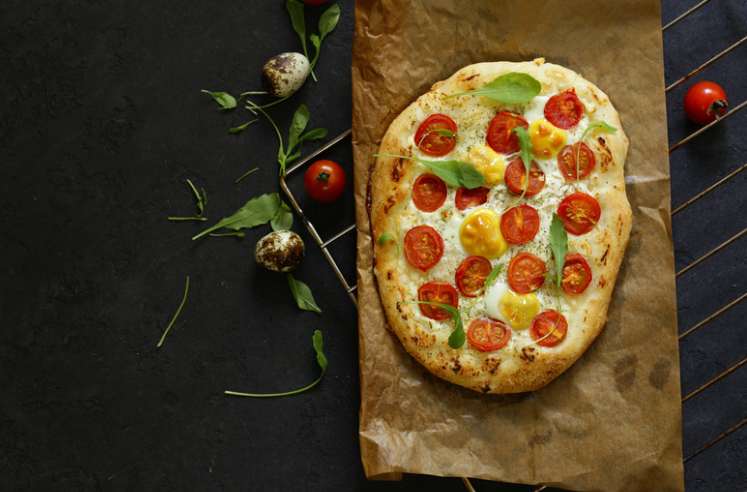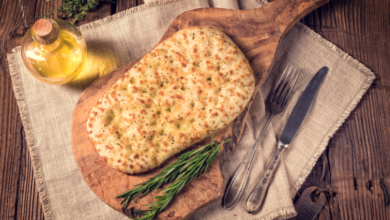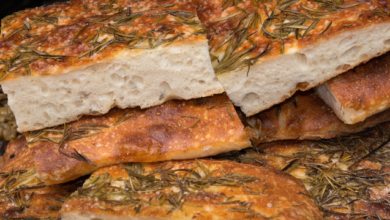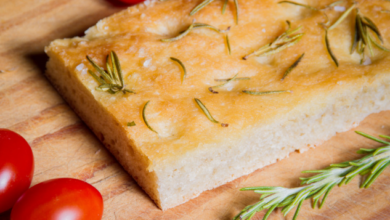Does Focaccia Have Gluten? Here’s What We Know

What To Know
- The wheat flour used in the dough provides the gluten that gives focaccia its characteristic texture.
- Even if a focaccia is labeled gluten-free, there is always a risk of cross-contamination during production or handling.
- If you are highly sensitive to gluten, it is best to avoid any focaccia that has been made in a facility that also processes gluten-containing products.
Focaccia, an Italian flatbread with a golden crust and airy interior, has captured the hearts of bread enthusiasts worldwide. But for those with gluten sensitivities, the question arises: “Does focaccia have gluten?” In this comprehensive guide, we will delve into the gluten content of focaccia, exploring its ingredients, variations, and potential gluten-free alternatives.
What is Gluten?
Gluten is a protein found in wheat, rye, and barley. It is responsible for the elasticity and chewiness of bread. For individuals with celiac disease or gluten intolerance, consuming gluten can trigger an immune response that damages the small intestine.
Traditional Focaccia Ingredients
Traditional focaccia is made with a combination of the following ingredients:
- Flour: Typically, focaccia is made with wheat flour, which contains gluten.
- Water: Water hydrates the dough and helps develop its texture.
- Yeast: Yeast ferments the dough, creating carbon dioxide bubbles that give focaccia its airy interior.
- Salt: Salt enhances the flavor and balances the sweetness of the dough.
- Olive Oil: Olive oil is drizzled on top of the dough before baking, creating a golden crust and adding flavor.
Does Traditional Focaccia Have Gluten?
Based on its traditional ingredients, yes, traditional focaccia does contain gluten. The wheat flour used in the dough provides the gluten that gives focaccia its characteristic texture.
Gluten-Free Focaccia Options
For those who avoid gluten, there are several gluten-free focaccia alternatives available:
- Gluten-Free Flour Blend: Many gluten-free flour blends can be used to make a gluten-free focaccia dough.
- Almond Flour: Almond flour is a naturally gluten-free alternative to wheat flour.
- Coconut Flour: Coconut flour is another gluten-free option that adds a slightly nutty flavor to focaccia.
How to Identify Gluten-Free Focaccia
When purchasing focaccia, look for the following indicators of gluten-free status:
- Gluten-Free Label: The packaging should clearly state “Gluten-Free.”
- Certified Gluten-Free: Look for a certification from a reputable organization like the Gluten-Free Certification Organization (GFCO).
- Ingredients List: Carefully check the ingredients list for any gluten-containing grains, such as wheat, rye, or barley.
Cross-Contamination Risks
Even if a focaccia is labeled gluten-free, there is always a risk of cross-contamination during production or handling. If you are highly sensitive to gluten, it is best to avoid any focaccia that has been made in a facility that also processes gluten-containing products.
Benefits of Focaccia
Focaccia, whether traditional or gluten-free, offers several nutritional benefits:
- Carbohydrates: Focaccia provides a good source of carbohydrates, which are essential for energy.
- Fiber: The fiber content in focaccia helps promote digestive health and satiety.
- Vitamins and Minerals: Focaccia contains small amounts of vitamins and minerals, such as iron, magnesium, and vitamin B6.
Final Note: Navigating the Gluten Maze
Understanding the gluten content of focaccia is crucial for individuals with gluten sensitivities or celiac disease. Traditional focaccia contains gluten, but several gluten-free alternatives are available. By carefully checking ingredient lists, looking for gluten-free labels, and being aware of cross-contamination risks, you can enjoy the deliciousness of focaccia without compromising your health.
What You Need to Know
Q: Is all focaccia gluten-free?
A: No, traditional focaccia made with wheat flour contains gluten.
Q: What is a good gluten-free flour blend to use for focaccia?
A: A blend of tapioca flour, potato starch, and brown rice flour is a good option.
Q: How can I reduce the risk of cross-contamination when buying focaccia?
A: Purchase focaccia from a bakery or store that specializes in gluten-free products.
Q: What are the benefits of eating focaccia?
A: Focaccia provides carbohydrates, fiber, and some vitamins and minerals.
Q: Can I make focaccia at home using gluten-free flour?
A: Yes, there are many recipes available online for gluten-free focaccia.





